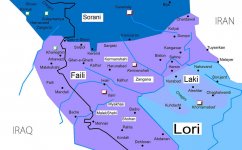Alan
Elite member
- Messages
- 2,517
- Reaction score
- 450
- Points
- 0
- Ethnic group
- Kurdish
- Y-DNA haplogroup
- R1a1a1
- mtDNA haplogroup
- HV2a1 +G13708A
However, that is not what the pre-announcement states nor implies. It states:
There are several key words in this sentence. 1. the little word direct, which implies they didn't contributed directly as Anatolian_Levant farmers to the European continent but rather indirect and in lower percentage, in form of maybe Mykop to Yamnaya. 2. What I have learned in these papers is, they distinguish between Europe and Eurasian Steppes. When they talk of EUrope they generally mean the lands west of Anatolia. And they refer to the European and Asian Steppes simply as Eurasian Steppes. So I kinda believe they don't really talk about the Eurasian Steppes here when they speak of Europe.
Last edited:






